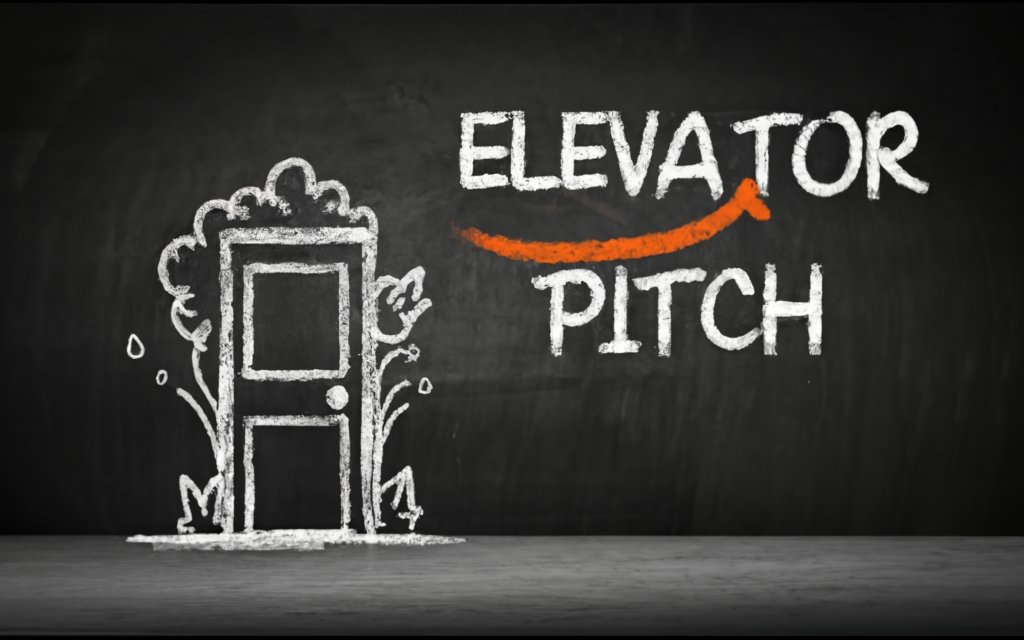You step into the elevator, hit your floor button, and then realize the person next to you is a major foundation director. You have 30 seconds max before they get off. What do you say to capture their interest in your nonprofit? Here’s how to craft and master the nonprofit elevator pitch.
What is a Nonprofit Elevator Pitch?
An elevator pitch, as the name suggests, is a brief and compelling speech that quickly communicates what an organization does and why it matters. The term comes from the notion that the pitch should be short enough to deliver during a brief elevator ride. For nonprofits, crafting an effective elevator pitch is crucial for conveying your mission when every second counts.
In essence, a nonprofit elevator pitch is a short summary that explains:
- The social problem or need your organization addresses
- Your nonprofit’s mission, goals, and target beneficiaries
- What makes your nonprofit unique
- Your key programs and impact to date
- A call-to-action so the listener can get involved
The elevator pitch allows you to spark interest in your cause and organization in the short span of 30 to 60 seconds. It’s useful for making a memorable impression in various scenarios, like at fundraising or networking events when meeting potential donors or partners. A strong elevator pitch is essentially your organization’s sales pitch.
Let’s break down exactly why a compelling elevator pitch is so critical for nonprofits:
Grabs Attention Quickly
You often have just seconds to introduce your organization to community leaders, corporate partners, potential donors, or volunteers. An elevator pitch allows you to highlight your mission and programs succinctly to capture interest right away.
Explains Your “Why”
Your elevator pitch should communicate the specific social impact your nonprofit aims to make. This conveys your “why” and the change you strive for in the world.
Shows What Sets You Apart
The nonprofit sector is highly competitive for funding and resources. Your elevator pitch should highlight your distinctive approach, programs, or services that set you apart from other organizations.
Calls Others to Action
An elevator pitch always ends with a clear call-to-action, whether asking the listener to donate, volunteer, spread the word, or collaborate. This keeps the conversation going.
Versatile for Any Occasion
An elevator pitch comes in handy whether you’re attending a conference, fundraiser, meeting donors over coffee, or just connecting with someone new who asks what you do. It’s your go-to spiel to share.
Lingers After the Ride Ends
A compelling elevator pitch sticks in people’s minds long after your exchange ends. This gives your organization lasting visibility rather than just being forgettable.
So in summary, a strong elevator pitch is a powerful tool for nonprofits to introduce their organization, stand out from the crowd, and motivate others to get involved in their mission. It’s an essential component of promoting your work and driving support. Taking the time to craft and refine your pitch pays invaluable dividends.

Elements of an Impactful Nonprofit Elevator Pitch
Crafting an elevator pitch that makes a powerful impact requires focusing on a few key elements. Let’s look at each section you need to include to make your nonprofit’s pitch shine.
Problem Statement
First and foremost, your pitch should address the specific social problem, need, or issue that your nonprofit aims to tackle. Concisely explain the pain point you are working to solve. For example, “Our city has over 5,000 homeless youth living on the streets, lacking basic necessities and support.” Quantify the problem with real metrics and data to make it tangible. Paint a brief but vivid picture of the challenges people face related to this problem. The problem statement quickly gets to the heart of why your organization exists in the first place.
Mission Statement
Next, transition from the sobering problem to sharing your nonprofit’s inspiring vision and mission. For example, “Our mission at Youth Haven is to empower homeless youth in our city to get off the streets by providing safe shelter, mental healthcare, education, and job training. We believe every young person deserves a path forward.” Your mission statement defines your raison d’etre – why your nonprofit does what it does each day. Keep it short, sincere, and memorable. If you have an organization tagline, this is a great spot to highlight it as well.
Target Audience and Beneficiaries
Now get specific about who your nonprofit serves. Even if the social problem itself affects a broad segment of people, narrow in on the specific demographic your programs target. For example, “We specifically serve at-risk LGBTQ homeless youth ages 16-24 in the city’s Urban Core neighborhoods.” Defining your target audience and beneficiaries shows you have laser focus in addressing the need. It also helps the listener visualize who directly benefits from involvement in your mission.
Unique Solution and Programs
Next, explain what sets your nonprofit apart in addressing this problem. Share your unique approach, services, and programs. For example, “Our nonprofit runs a 30-bed emergency shelter specifically for LGBTQ youth, the only one of its kind in the region. We also offer case management, mental health resources, meals and supplies, as well as our Back on Track program which helps youth earn their GEDs and gain job skills.” Convey your distinct solution and highlight your flagship initiatives that address the need. This is your chance to articulate what makes your nonprofit innovative.
Impact and Results
Quantify the tangible impact your programs have already produced. For example, “So far Youth Haven has provided over 65,000 meals, helped 230 youth find jobs, and given shelter to over 500 homeless youth last year alone.” Back up your claims about changing lives with real metrics and stories. Hard numbers and case examples make your mission come to life. Focus on the most compelling facts that showcase your proven model.
Call to Action
Wrap up your pitch by issuing a clear call to action based on who you’re speaking with. Give the listener a specific way to get involved after hearing your message by donating, volunteering, advocating, or partnering. This gives your pitch a sense of forward momentum. End on an inspirational yet practical note about how they can be part of the solution through supporting your nonprofit in whatever capacity makes sense.
By covering each of these elements – the problem, mission, audience, solution, impact, and call to action – your elevator pitch tells a compelling story. You frame the urgent need, show how your organization addresses it, and inspire your audience to take the next step with you. With practice, you’ll be able to deliver a polished pitch that moves hearts and minds.
How to Structure Your Nonprofit Elevator Pitch
Now that we’ve covered the key elements to include in your nonprofit elevator pitch, let’s look at how to put it all together into an impactful format and flow.
Lead with the Problem You Address
Get your listener’s attention immediately by opening your pitch by introducing the pressing social issue or unmet need your nonprofit aims to address. Start with a concise but compelling statement summarizing the problem.
For example:
- “In our city, over 8,000 adults are experiencing homelessness each night.”
- “One in five children in our county go to bed hungry.”
Use a startling fact or statistic to convey the gravity and prevalence of the issue. This grabs interest while establishing your organization as addressing a serious problem that matters.
After defining the overarching problem, you can provide more context around contributing factors, everyday challenges it presents for people, and why solutions are lacking. But keep it brief – you want to focus on outlining the problem rather than delving too deep into explanations. Your goal is to get the listener invested in the problem your nonprofit aims to solve right from the start.
State Your Mission Clearly
The next key move is to seamlessly pivot from the vexing social problem to sharing your nonprofit’s vision for solving it. Follow your problem statement with a 1-2 sentence mission statement plainly explaining your organization’s purpose.
For example:
- “Our mission at Food for All is to eliminate childhood hunger in our county by providing weekend meal packs and in-school pantries while advocating for policy changes.”
- “Housing Helping Hands is dedicated to building pathways out of homelessness through shelter, job training, and mental health services.”
Your mission statement should convey what you do and the change you seek to create in the world. It explains both your short-term direct services and long-term goals for systemic impact. State it clearly and confidently.
Specify Your Target Audience and Beneficiaries
Now that you’ve explained the landscape-level problem and your mission to address it, bring your focus back to the specific people you serve. Succinctly define your target audience and intended beneficiaries.
For example:
- “We work to end hunger specifically among elementary school children in the County School District.”
- “Our programs serve men over 50 experiencing homelessness in the Downtown area who face additional barriers to accessing support.”
Being explicit about who your nonprofit directly serves allows the listener to visualize and humanize the beneficiaries of your work. It also demonstrates an intentional, targeted approach.
Highlight Your Distinct Approach and Programs
After summarizing the need and your overarching mission, take a moment to articulate how your nonprofit delivers on it through your unique solution and concrete programs.
For example:
- “Our nonprofit runs after-school food pantries at 25 Title 1 schools, providing meal packs and fresh produce to sustain kids through the weekend.”
- “We operate a 90-bed shelter downtown focused on older men, offering hot meals, case management, and our Steps Forward program which provides job and life skills training tailored to their needs.”
Communicate your distinct approach and highlight your most noteworthy initiatives addressing the problem. Don’t just make vague claims about helping people – speak to your measurable on-the-ground impact.
Quantify Your Impact
Now bring your mission to life with real numbers that quantify your outcomes and demonstrate tangible change. Share hard metrics highlighting your results to date.
For example:
- “So far we have provided over 15,000 meal packs, directly reducing hunger for hundreds of food-insecure children.”
- “Last year our shelter served 350 men over 50 and our job training program helped 125 of them gain employment.”
Back up your talk about making a difference with cold hard facts. Remember, specifics are more compelling than generalizations.
End with a Clear Call to Action
Close your pitch with a crisp call to action tailored to your audience that gives a specific way to get involved. Perhaps ask them to donate, volunteer, help advocate for a cause, or collaborate on an initiative.
For example:
- “Will you consider donating to help us keep our food pantries fully stocked and expand to more schools?”
- “We’re looking for volunteers to mentor our job trainees – would you or your company be interested in getting involved?”
- “Will you join our advocacy campaign to increase affordable housing funding in the upcoming county budget?”
Ending with a defined ask keeps your mission front and center rather than just imparting information. It moves the conversation forward.
Follow this structure – problem, mission, audience, approach, impact, call to action – and your nonprofit elevator pitch will tell a compelling, memorable story!

Nonprofit Elevator Pitch Examples and Templates
Let’s look at some sample nonprofit elevator pitch templates and real-world examples to inspire your own pitch.
Elevator Pitch Template 1
[Mission statement] Our mission at [Nonprofit Name] is to [mission objectives] by providing [key programs or services].
The problem is [concise problem statement with statistic].
Specifically, we help [target audience] in [location served] by [highlight unique approach]. So far we have [quantify impact with metrics].
Will you [call to action request]?
Elevator Pitch Template 2
I’m with [Nonprofit Name], and we’re committed to [mission statement].
[Problem statement]
To address this, we [explain key programs and approach]. As a result, we’ve been able to [share impact metrics and achievements].
But there’s more work to be done, and we need your support. Will you [call to action request]?
Real Nonprofit Elevator Pitch Examples
Here are some real-world examples of compelling nonprofit elevator pitches:
Clean Water Charity
Nearly 1 million people worldwide die each year from diseases caused by lack of access to clean water. That’s why I founded Clean Water Charity. Our mission is to reduce preventable waterborne illness in the developing world by building wells and sanitation systems. So far we have brought clean water access to over 50,000 people across 8 countries. Will you donate just $25 each month to help us reach the next community in need?
Youth Literacy Program
Our community has over 750 middle schoolers reading below grade level. That’s why I started the Youth Literacy Program – to help struggling readers not just keep up, but get ahead. We pair tutors with students for personalized reading intervention right in their schools. Last year alone, 80% of our students improved by at least one grade level. Will you volunteer just 1 hour a week to tutor a child in need?
Homelessness Services
On any given night, over 600 people in our city are forced to sleep on the streets. Here at Lifting Up, we aim to end homelessness through housing, healthcare, job assistance, and advocacy. Our approach is both a shelter and a launchpad for better lives. Since opening 2 years ago, we have sheltered 425 individuals and helped 130 transition into permanent housing. Will you donate clothes or blankets to help keep our residents warm this winter?
These examples follow a compelling structure and make every word count. Use them as inspiration to craft your own high-impact nonprofit elevator pitch!
How to Practice and Improve Your Pitch
You’ve crafted what you think is a killer nonprofit elevator pitch. But how do you take it from good to great? Practice, feedback, and refinement over time. Here are some tips:
Rehearse the Pitch…a Lot
The best way to polish your pitch is through regular rehearsal. Set aside time to rehearse delivering it out loud, from start to finish, until the flow feels smooth and natural. Time yourself to ensure you’re within the 30-60 second target. The more you practice, the less scripted and more conversational your pitch will become.
Tailor It for Different Audiences
Have versions tailored for different stakeholders – donors, volunteers, corporate partners, media, etc. For example, emphasize inspiring program stories for donors versus quantifiable metrics for corporate partners. Practice adjusting your pitch language, focus, and call-to-action accordingly.
Get Feedback from Colleagues
Ask trusted colleagues to listen to your pitch and provide candid constructive feedback. What resonated most? Were any parts confusing? Did the call-to-action make sense? Gather input to strengthen your pitch.
Listen to Pitches from Other Nonprofits
Pay close attention when you hear elevator pitches from other nonprofits at events. What made the most memorable and impactful pitches stand out? Incorporate insights into improving your own.
Time Yourself Rigorously
Continuously time yourself when practicing to ensure you’re within the 30-60 second sweet spot. It’s easy to go over when first starting out. Challenge yourself to refine your pitch to not a second over 60 seconds.
Record Yourself
Use your phone to video or audio record yourself giving the pitch. Play it back to see areas for improvement. Look for distracting verbal tics like “um” or “you know” to eliminate.
Weave In Your Origin Story
Briefly sharing how your nonprofit was founded can make your pitch more compelling. Work it organically into the flow when talking about the problem you address.
Use Notes Strategically
When first starting out, notes can help remember key points. But relying on them hinders your pitch. Gradually reduce your need for notes through enough practice.
Get Comfortable with Imperfections
Any elevator pitch will have some imperfection or awkwardness. Don’t obsess over being flawless. Focus on your passion and delivery.
Refine Over Time
Keep refining even after you start using your pitch regularly. Tweak language, focus, and flow based on audience response and changing organization priorities.
With ongoing practice and feedback, your once-stiff elevator pitch will transform into an authentic, concise expression of your nonprofit’s inspiring mission.

Using Your Pitch at Events and in Other Scenarios
You’ve crafted your killer nonprofit elevator pitch. Now let’s look at ways to put it to use in various settings.
Fundraising and Donor Events
These are prime opportunities to share your pitch with potential supporters. When networking, introduce yourself with your pitch to tell donors and corporate partners about your mission. Be ready to adapt your call-to-action, perhaps asking them about their interests and how they might like to get involved.
Conferences and Trade Shows
Conferences offer access to many influential people at once. Bring business cards and end your pitch by offering your card and inviting them to continue the conversation. Be sure to get their card in return to follow up afterward.
Community Presentations
When asked to present to a community group, board of directors, or local leaders, open with your powerful elevator pitch before diving into the rest of your presentation. This nicely sets the stage.
Media Interviews
Your elevator pitch makes a strong media sound bite. Offer it up front when reporters ask about your nonprofit. Shape it into the compelling response to “What does your nonprofit do and why?” for radio or TV.
Cold Calls and Emails
An elevator pitch is the perfect introduction when reaching out cold to potential corporate sponsors or partners. Summarize your mission, programs, and offer to set up a meeting to explore synergies.
New Hires Onboarding
Share your elevator pitch during new employee onboarding so all staff can consistently articulate your mission. It empowers them to represent your nonprofit when networking.
In Casual Conversation
You never know when an opportunity to connect with an influencer may arise organically. When asked in casual small talk what you do, lead with your pitch. You’ll be glad you have it memorized.
Online Profiles
Incorporate elements of your elevator pitch in your LinkedIn profile, Twitter bio, nonprofit website “About Us” section, and other online presence. These digital venues allow your pitch to reach an even wider audience.
The elevator pitch is a versatile tool for promoting your nonprofit anytime, anywhere. With practice, it will soon become second nature when representing your mission in any setting.

Tools and Resources for Crafting Your Elevator Pitch
Fortunately, nonprofits don’t have to build their elevator pitch from scratch. Here are some helpful tools and resource guides to make developing your pitch easier:
Elevator Pitch Generators
- The Nonprofit Marketing Guide’s elevator pitch generator prompts you through the key sections to create a customized pitch.
- Good2Give’s elevator pitch builder helps craft your pitch in under 10 minutes.
- TopNonprofits offers a fill-in-the-blank elevator pitch template to build from.
Elevator Pitch Courses
- Mission Minded offers a self-paced online course to take you from pitch beginner to pro.
- CharityHowTo has a comprehensive course focused just on nonprofit elevator pitches.
Pitch Decks and Presentations
- Check out TopNonprofit’s elevator pitch PowerPoint template for a slideshow format.
- The Foundation Center offers a sample nonprofit pitch deck with helpful examples.
Books
- “The Elevator Pitch” by Chris Westfall offers frameworks to craft an irresistible pitch.
- “The Nonprofit Marketing Guide” by Kivi Leroux Miller includes a full chapter on acing your elevator pitch.
Online Tools
- Use Canva’s nonprofit elevator pitch templates to create visual slides.
- Try TikTok’s elevator pitch challenge to create a quick video pitch.
With these handy resources at your fingertips, you’ll be able to develop and refine a winning nonprofit elevator pitch. Now get out there and start pitching!
Key Takeaways: Crafting a Compelling Nonprofit Elevator Pitch
- An elevator pitch is a brief, persuasive speech that conveys your nonprofit’s mission and makes an ask. It should be 30-60 seconds.
- Key elements include the problem statement, mission, target audience, unique solution, impact metrics, and call to action.
- Structure your pitch opening with the problem, transitioning into your mission, programs, impact, and ending with a request.
- Practice relentlessly and get feedback to polish your pitch into a smooth, natural delivery.
- Use your refined pitch at fundraising events, conferences, community meetings, media interviews, and other opportunities.
- Leverage pitch templates, online tools, courses, and books to help develop your perfect pitch.
- A compelling elevator pitch is an invaluable asset for any nonprofit. Take the time to craft yours and see the doors it opens! Here are some frequently asked questions about crafting a nonprofit elevator pitch:
Frequently Asked Questions
Q: How long should a nonprofit elevator pitch be?
A:Aim for 30-60 seconds max. This keeps it concise yet impactful. Time yourself to stay within this range.
Q: How do I highlight our mission without getting too detailed?
A: Focus on your purpose and objectives at a high-level rather than listing specific programs. Keep it short but stirring.
Q: Should I memorize my pitch word-for-word?
A: No, work from bullet points and practice until it sounds natural. Sounding robotic hurts your pitch.
Q: What if I freeze up and can’t remember my pitch?
A: It happens! Have a few lead lines you can always fall back to, like sharing your mission statement.
Q: How do I quantify our impact with metrics?
A: Focus on 1-3 meaningful stats that convey your results, like number served or lives changed. Quality over quantity.
Q: Should I adapt my pitch for different audiences?
A: Yes, tailor details and your call-to-action based on speaking with donors, volunteers, partners, etc.
Q: How can we integrate our pitch on our website?
A: Summarize it in your “About Us” page! Also include key details in other site sections as fits.
Q: What if my pitch is too long when I practice it?
A: Pare it down to key details. Remove extra words. Only keep the most compelling facts and examples.
Let us know if you have any other nonprofit elevator pitch questions!

